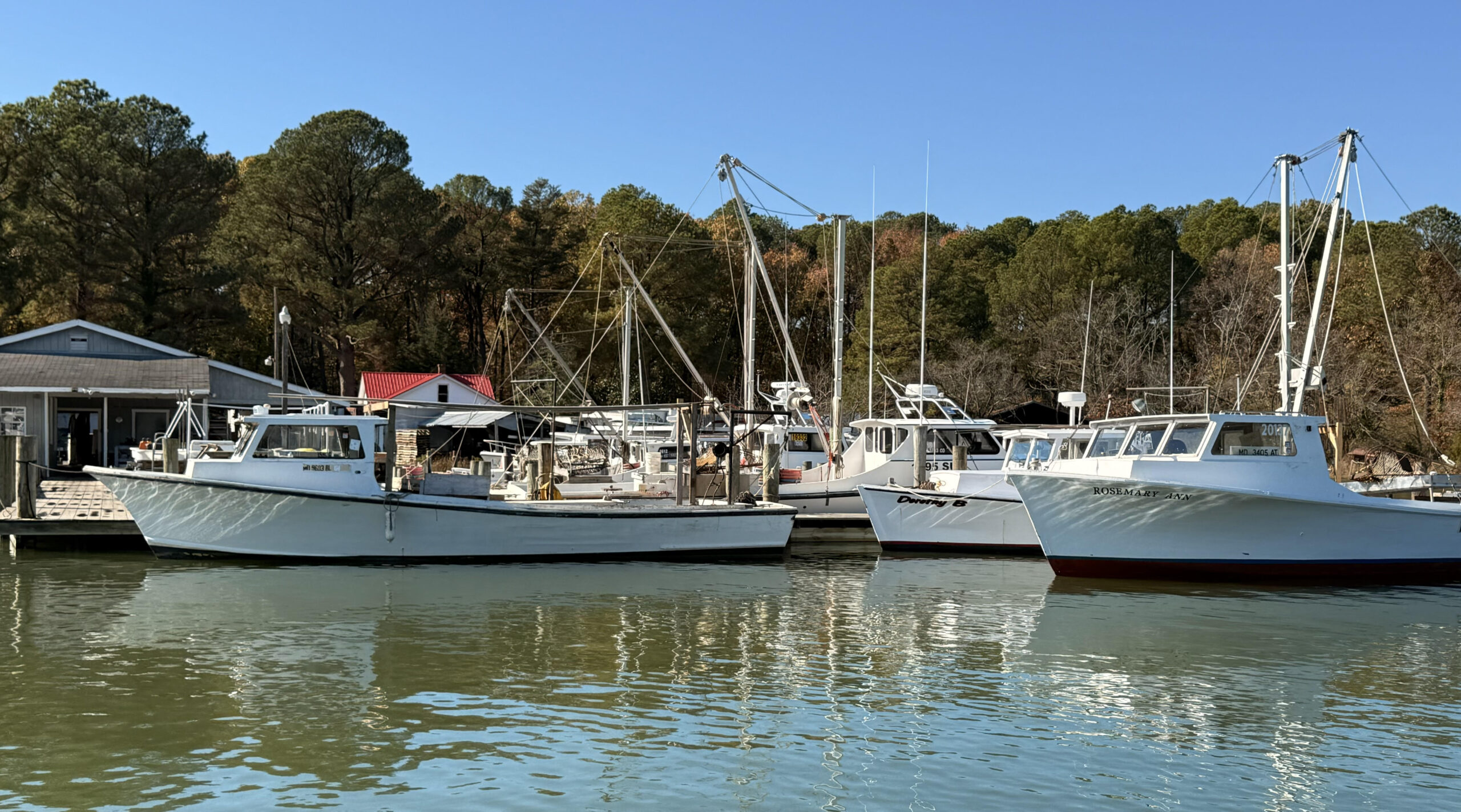Efforts to bolster Maryland’s flagging economy and ease projected budget deficits may hinge on improving the state’s transit and road systems.
But the fund that pays for roads and transit is projected to have a more than $1 billion shortfall over the next six years, and lawmakers will return to Annapolis next month facing the prospect of “enormous” deficits in other parts of the budget.
That was the challenge laid out recently at a conference of state officials and business leaders, who said efforts to grow the state’s economy may depend on improving the state’s transportation system.
“Investing in Maryland’s transportation network will make the state more attractive to business,” said David Smith, head of government affairs for Martin Marietta, during the symposium last month held by the Maryland Chamber of Commerce.
A debate about tax increases that began earlier this year is sure to resume when the General Assembly convenes in January. Gov. Wes Moore (D) and Senate President Bill Ferguson (D-Baltimore) have so far rejected broad-based tax increases, favoring a focus on growing the state’s economy.
But the state’s economy is stagnant. The operating and Transportation Trust Funds are in the red.
Smith pointed to a July CNBC ranking of top states for business, in which Maryland ranked 31st overall and 37th for infrastructure. By comparison, Virginia ranked first overall and third for infrastructure. Pennsylvania ranked 17th overall and 20th for infrastructure.
Del. Marc Korman (D-Montgomery), chair of the House Environment and Transportation Committee, said employers “want to be near transportation that works.” But even the systems already in place in the state are struggling.
“A great example is the Light Rail system in Baltimore City, which is being held together by MacGyver with duct tape and chewing gum,” Korman said. “It could be a really great transit option for lots of businesses, if you get it working and get better service again. So, if we can create those opportunities around the state, we’re in a great position.”
Maryland faces an “enormous” projected operating budget deficit. Recent estimates predict the gap between revenue and spending will be $2.6 billion in the coming fiscal year, and approach $6 billion by fiscal 2030.
“Budget deficits are an inherent reality of government,” Lt. Gov. Aruna Miller (D), told attendees of the half-day conference. “Make no mistake on that. In fact, 18 of the past 21 state budgets had built-in deficits, underscoring the balance between making critical investments and maintaining fiscal responsibility.”
Much of the gap, especially in the out years of the Department of Legislative Services projections, is driven by higher costs of the education reforms in the Blueprint for Maryland’s Future.
Coupled with the operating budget gap is another, more than $1 billion, gap over six years for transportation projects.
Any solution for transportation funding would have to come with solutions for paying for the costs of the Blueprint, according to Korman.
“I know, at least speaking for my colleagues in the House of Delegates, if I can be so bold, that is a big issue,” Korman said. “We are not interested in solving one very important part of our economy, which is transportation, but not another, which is education. And so, these things all have to be done together.”
A derailed TRAIN
Earlier this year, when the House and Senate clashed over tax plans, the House wanted to abolish the Transportation Revenue and Infrastructure Needs Commission — the TRAIN Commission — before the panel handed over a menu of options to modernize the Transportation Trust Fund.
Instead, the two chambers dissolved the original 31-member panel and reconstituted it as two panels: A smaller commission that would author a final report by January and a second, larger panel composed mostly of advocates, to advise the commission.
Lawmakers called on the panel to deliver a final report before the 2025 session, but that’s unlikely to happen. Members of the two new panels have not been announced. The groups have yet to meet, and the window for meeting is closing as the holidays approach.
Frank Principe, chair of the original commission, said solutions will require the governor and legislative leaders to reach some consensus on options.
“I think that the low-hanging fruit is pretty limited,” Principe told the chamber audience. “The bigger changes and needs for resources that we’re going to need to get to where we want to be requires us to make bigger and bolder steps. And I think that’s just political will to do that.
“The TRAIN Commission is more than happy to create menus of options and opportunities for conversations around what we need and what could potentially bring the resources that the department needs to be able to move on projects that we all agree need to happen,” he said. “But that really starts at the top. Without that direction, it’s going to be hard for us to get us where we need to be.”
Miller and others are looking to Principe’s panel for options.
“Currently, yes, we do have a funding shortfall that is driven in part by many different factors, including the less-than-expected revenue for the state gas tax, reduced federal funding and an end to the federal COVID-19 aid and increased construction costs,” Miller said. She said the TRAIN Commission, is making recommendations to stabilize funding.
Modernizing the Transportation Trust Fund will likely rely on several options working in concert with each other, according to Cinzia Cirrillo, director of the Center for Multimodal Mobility at the University of Maryland.
“So, there are ways that have been adopted to supplement the revenue for transportation,” Cirrillo said. “And as I tell my students all the time, in transportation, one solution is not going to work. It’s a bundle of solutions that will help raise the money that we need in transportation. And unfortunately, for transportation projects, you need a lot of money.”
Principe said there are “more choices to be made than resources that are available,” when it comes to a menu of funding options.”So, at the end of the day, we’re going to have to figure that out.”
Regional authority, local responsibility
There is plenty to figure out.
“I think that the key question is, do we want to stick with our current statewide model, or do we want to shift to regionalization?” Korman said. “I think that’s a pretty big conversation.”
But Korman said regionalization comes with a different cost for local governments.
“I think realistically, if the state was going to hand the counties additional authority, it would probably hand them additional responsibilities,” Korman said, adding that state officials would “not just give away taxing power without asking them to take on obligations.”
Other solutions could include regionalized taxes based on proximity to transit systems in the area, according to Korman.
Another possibility that is fraught with potential problems is a tax based on miles traveled — a vehicle miles traveled tax. Four states are currently piloting such programs.
Currently, the majority of transit and road projects around the state are paid for through the Transportation Trust Fund, a dedicated account funded by various registration fees and taxes, with most of its funding coming from the state’s motor fuel tax.
The state started 2024 with a proposed six-year plan that cost $3.1 billion more than the fund could support. Transportation Secretary Paul Wiedefeld later revised that projection to a smaller — but still sizable — $1.3 billion over the six years.
“There’s these tremendous pressures on the state’s revenue sources,” Wiedefeld said. “I think there’s a much greater understanding of that.”
The lack of money means projects requested by the state’s 24 political subdivisions could be delayed or even paused indefinitely.
“The problem we have is whether you’re like me and want to see three Purple lines, or like some of the other folks here and want to see three new Beltways, American Legion Bridge improvement with the Red Line … or a new Bay Bridge — whatever it is you want to see, we don’t have enough money for any of it. That’s obviously the challenge before us,” Korman said.
By Bryan P. Sears
– Maryland Matters reporter Bryan P. Sears was an uncompensated moderator of a panel during the Maryland Chamber of Commerce transportation symposium.







